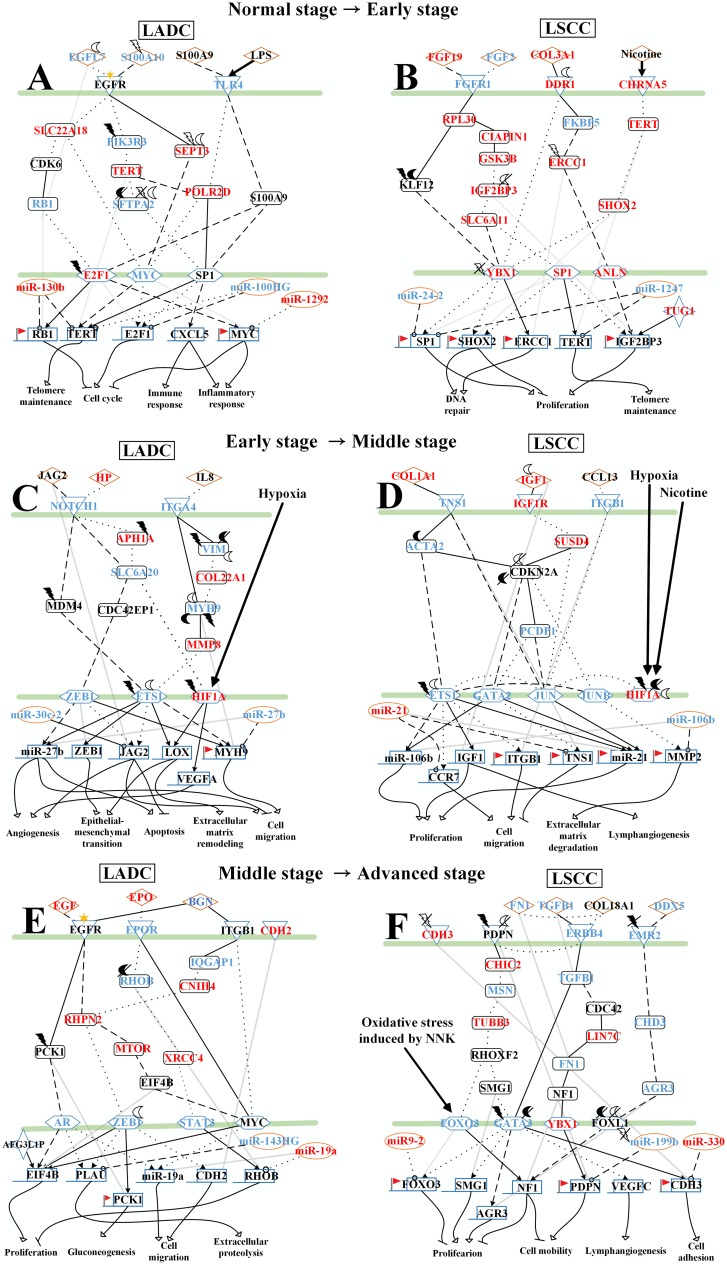Figure 6. The specific core signaling pathways extracted from Figures 2–4 for investigating the differential progression molecular mechanisms between LADC and LSCC.
(A) The genetic and epigenetic progression mechanisms from normal stage to early stage LADC could be potentially caused by inflammatory microenvironment induced by bacteria infection (LPS), dysfunctions of EGFR, and TLR4 signaling, regulation of miR-130b, miR-100HG, and miR-1292, epigenetic modifications of E2F1 and SFTPA2, DNA methylation of MYC and RB1, and aberrant cellular functions, such as cell cycle. (B) The genetic and epigenetic progression mechanisms from normal stage to early stage LSCC can be potentially caused by inflammatory microenvironment induced by exposure to xenobiotic toxicity nicotine, dysfunctions of FGFR1, DDR1, and CHRNA5 signaling, regulation of miR-24-2 and miR-1247, lncRNA TUG1, epigenetic modification of KLF12 and ERCC1, DNA methylation of SHOX2, and aberrant cellular functions, such as DNA repair. (C) The genetic and epigenetic progression mechanisms from early stage LADC to middle stage LADC can be potentially induced by hypoxic tumor microenvironment, dysfunctions of NOTCH1 and ITGA4 (CD49d) signaling, regulation of miR-30c-2 and miR-27b, epigenetic modifications of VIM, MYH9, MDM4, and ETS1, and dysregulation of cellular functions, such as angiogenesis, ECM remodeling, and EMT. (D) The genetic and epigenetic progression mechanisms from early stage LADC to middle stage LADC can be potentially induced by hypoxic tumor microenvironment exposed to nicotine, dysfunctions of IGF-1R, ITGB1 (CD29), and TNS1 signaling, regulation of miR-106b, epigenetic modifications of HIF1α, IGF-1, and ETS1, DNA methylation of ITGB1, TNS1, and miR-21, and dysregulation of cellular functions, such as lymphangiogenesis, cell migration, ECM degradation. (E) The genetic and epigenetic progression mechanisms from early stage LADC to middle stage LADC can be potentially induced by the alteration of tumor microenvironment caused by hydrogen peroxide secreted by cancer cells, dysfunctions of EGFR, EPOR, and ITGB1 (CD29) signaling, regulation of miR-143HG and miR-19a, epigenetic modifications of ZEB1 and RHOB, and DNA methylation of PCK1, and dysregulation of cellular functions, such as gluconeogenesis, extracellular proteolysis. (F) The genetic and epigenetic progression mechanisms from early stage LSCC to middle stage LSCC can be potentially induced by the alteration of tumor microenvironment caused by oxidative stress induced by the stimulation of nicotine derived nitrosaminoketone (NNK), dysfunctions of ERBB4, PDPN, and EMR2 signaling, regulation of miR-9-2, epigenetic modifications of GATA3, FOXL1, and CDH3, DNA methylation of PDPN, and dysregulation of cellular functions, such as proliferation, cell mobility, and cell adhesion.

